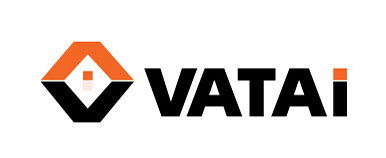See also
- VAT Implications of Transfer Pricing Adjustments (Answer 214/2025) – VATupdate
- Some guidance on whether Transfer Pricing Adjustments would be in or out of scope of VAT – VATupdate
- VAT and Transfer Pricing – Four recent cases @ ECJ/CJEU – 2 cases decided, 1 AG Opinion issued – VATupdate
Briefing Document: Italian VAT on Transfer Pricing Adjustments
Subject: Analysis of Italian Revenue Agency Guidance on VAT Treatment of Transfer Pricing Adjustments in Multinational Transactions
Summary: The Italian Revenue Agency (Agenzia delle Entrate) has clarified its position on the Value Added Tax (VAT) treatment of transfer pricing adjustments made by Italy-based distributors within multinational groups. The key takeaway is that transfer pricing adjustments are subject to VAT only if they directly modify the consideration for specific supplies of goods or services and are contractually linked to the original transactions. This requires a “direct link” between the adjustment and the specific supply, supported by robust documentation and a clear audit trail. The Agency’s position is consistent with broader EU VAT principles and interpretations offered by the European Commission and the VAT Expert Group. Failure to demonstrate this direct link results in the adjustments being treated as profit reallocations outside the scope of VAT.
Key Themes and Ideas:
- Central Issue: VAT Applicability to Transfer Pricing Adjustments: The core question is whether adjustments to intercompany prices, necessary to comply with the arm’s length principle, are subject to VAT in Italy. The Italian Revenue Agency addressed this issue in Letter No. 214/2025, responding to a request from an Italy-based distributor, ALFA, within the BETA Group.
- “The central issue is whether transfer pricing adjustments made by an Italy-based distributor within a multinational group are subject to Value Added Tax (VAT) in Italy.”
- The “Direct Link” Requirement: The most crucial element is the presence of a direct and demonstrable link between the transfer pricing adjustment and a specific supply of goods or services.
- “Adjustments are subject to VAT if they directly modify the consideration for specific supplies and are contractually linked to original transactions.”
- “To fall within the scope of VAT, transfer pricing adjustments must be expressly provided for by specific contractual clauses and must be decisive in the quantification of the consideration for the sale of goods or provision of services for the purpose of adjusting the prices of the goods sold or the services originally applied.”
- “If such pre-determination and consequently the direct link are not specified, the adjustments are considered mere profit allocations that aim solely to align profit margins with the values expected by the arm’s length principle and are therefore excluded from the scope of VAT.”
- Contractual Stipulation is Essential: The agreement between related parties must explicitly stipulate the adjustment mechanism and its connection to specific transactions. This contractual basis is crucial for VAT applicability.
- “The agreement between the parties must also explicitly stipulate the adjustment mechanism.”
- Importance of Documentation: Robust documentation is paramount to demonstrate the “direct link.” This includes a breakdown of affected invoices, a detailed calculation methodology, and a clear audit trail showing how the adjustments relate to specific supplies.
- “To support the VAT relevance of transfer pricing adjustments, there must be a clear audit trail, including a breakdown of affected invoices and a calculation methodology demonstrating how the adjustments relate to specific supplies.”
- “The currently effective Distribution Agreement specifies, in point 3.3, that once DELTA has calculated the adjustments (transfer pricing adjustments), it will issue, as appropriate, at the end of each quarter, a credit or debit note accompanied by supporting documentation, consisting of a list of the relevant invoices and the adjustment of the amounts allocated to the individual transactions, referred to as a breakdown.”
- Self-Invoicing and Reverse Charge Mechanism: In cases where the adjustments are VAT-relevant, the Italy-based distributor (ALFA) may be required to issue a self-invoice to account for the VAT, particularly in cross-border transactions where the supplier is not established in Italy. The reverse charge mechanism might also apply.
- “If these conditions are met, adjustments are subject to VAT, with ALFA required to issue self-invoices reflecting the adjustments.”
- “In the first case, pursuant to Article 17, paragraph 2 of the D.P.R. No. 633/1972, as these are transfers involving a purchaser established in Italy and a seller not established or resident within the territory of the State, the VAT due is paid by ALFA through the reverse charge mechanism…”
- Arm’s Length Principle and Transactional Net Margin Method (TNMM): The arm’s length principle requires transactions between related parties to be priced as if they were conducted between independent entities. Methods like TNMM are used to determine if transactions are at arm’s length. If adjustments are made based on TNMM to achieve the arm’s length result, the VAT treatment hinges on whether those adjustments are directly linked to specific supplies.
- “The arm’s length principle is the international standard that requires transactions between related parties to be priced as if they were conducted between independent parties under comparable circumstances.”
- “Using this method, once ALFA’s operating margin on sales achieved at the end of the reference period is calculated, it is compared with the target ROS provided by the Transactional Net Margin Method: if the two values do not align, price adjustments of the supplies are made to reach the target net margin of “arm’s length.”
- Article 13, Paragraph 1 of D.P.R. No. 633/1972: This article in Italian law states that the taxable base for VAT includes the total amount of consideration due to the seller according to contractual conditions, emphasizing the link between price adjustments and underlying transactions.
- “Article 13, paragraph 1 of D.P.R. No. 633/1972 establishes that the taxable base for VAT purposes includes the total amount of consideration due to the seller according to the contractual conditions.”
- EU Guidance and ECJ Rulings: The Italian Revenue Agency’s position aligns with guidance from the European Commission and rulings from the European Court of Justice (ECJ). These sources emphasize that VAT relevance requires a direct link between price adjustments and the original supply of goods or services. Adjustments for general profit alignment are generally outside the scope of VAT.
- “European Court of Justice (ECJ) rulings support the principle that VAT relevance requires a direct link between the price adjustments and the original supply of goods/services.”
- Credit and Debit Notes: Credit notes (reducing the amount owed) and debit notes (increasing the amount owed) are used to adjust the provisional selling price based on transfer pricing calculations and impact the amount of VAT due. These documents must be properly linked to specific invoices.
- Revised Distribution Agreements: The example of ALFA shows how companies are revising distribution agreements to ensure they meet the “direct link” requirement by specifying an analytical list of invoices to which the adjustments refer.
- “As a result, the Local Distribution Agreement between DELTA and ALFA was revised and replaced on __________ with the signing of a new agreement, which specified, unlike the previous one, that an analytical list of the invoices to which the transfer pricing adjustments refer should be indicated, and that the distribution of the same on the provisional prices related to the sale of products initially invoiced should be specified in detail through the preparation of a specific document called a breakdown.”
Implications:
- Multinational corporations operating in Italy must carefully review their transfer pricing policies and distribution agreements to ensure compliance with the Italian Revenue Agency’s guidance.
- Robust documentation practices are essential to support the VAT treatment of transfer pricing adjustments.
- Companies may need to revise their contractual arrangements to explicitly link transfer pricing adjustments to specific supplies and establish a clear audit trail.
- Understanding the nuances of Italian VAT law and EU VAT principles is crucial for correctly applying VAT to transfer pricing adjustments.
- Seeking local advice from a VAT and transfer pricing specialist is recommended.
Other newsletters
- Transfer pricing adjustments are generally not subject to VAT unless directly linked to specific supplies as price variations.
- Italy’s revenue agency issued guidance on VAT treatment of transfer pricing adjustments in Letter No. 214/2025.
- The guidance was in response to a case involving an Italy-based distributor within a multinational group.
- Adjustments are subject to VAT if they modify the consideration for specific supplies and are contractually linked to original transactions.
- European Commission Working Paper No. 923/2017 states adjustments fall outside VAT unless they are payment for a separate service or adjust consideration for specific supplies.
- Ruling No. 60/2018 confirms VAT applies if adjustments involve monetary or in-kind settlement, are linked to identifiable supplies, and have a direct link to adjusted consideration.
- No specific EU or Italian legislation governs VAT treatment of transfer pricing adjustments.
- Guidance is available in Commission’s Working Paper No. 923/2017 and VAT Expert Group’s document 081 REV2/2018.
- Adjustments without a direct link to specific supplies are seen as profit reallocations with no VAT implications.
Source: regfollower.com
Italian Revenue Agency Clarifies VAT Treatment of Transfer Pricing Adjustments for Provisionally Priced Goods
- Clarification on VAT Treatment: The Italian Revenue Agency’s Ruling No. 214 (August 19, 2025) addresses the VAT implications of transfer pricing adjustments between ALFA, an Italian distributor, and DELTA, a non-resident supplier in the BETA Group, under their local distribution agreement.
- Transfer Pricing Adjustments: ALFA purchases goods from DELTA at provisional prices, which are adjusted quarterly based on the arm’s length principle using the Transactional Net Margin Method (TNMM). Depending on ALFA’s performance against the target margin, DELTA issues debit or credit notes with supporting documentation.
- VAT Relevance of Adjustments: The ruling confirms that transfer pricing adjustments are VAT-relevant only if they change the consideration for specific supplies and are documented with a direct contractual link to the original transactions; otherwise, they are treated as profit reallocations and excluded from VAT.
Source Orbitax
Latest Posts in "Italy"
- Italy Uncovers €42.8 Million VAT Fraud in Luxury Car Trade Across Europe
- EPPO Uncovers EUR 42.8 Million VAT Fraud in Italy’s Luxury Car Market
- €42.8 Million VAT Fraud Uncovered: Luxury Cars and Assets Seized in Italy Investigation
- VAT Treatment of Photovoltaic Plant Sales: Mobile vs. Immobile Asset Classification
- Tax Office Denies VAT Refunds for Solar Installations on Agricultural Farms Due to Indeductibility Issues














